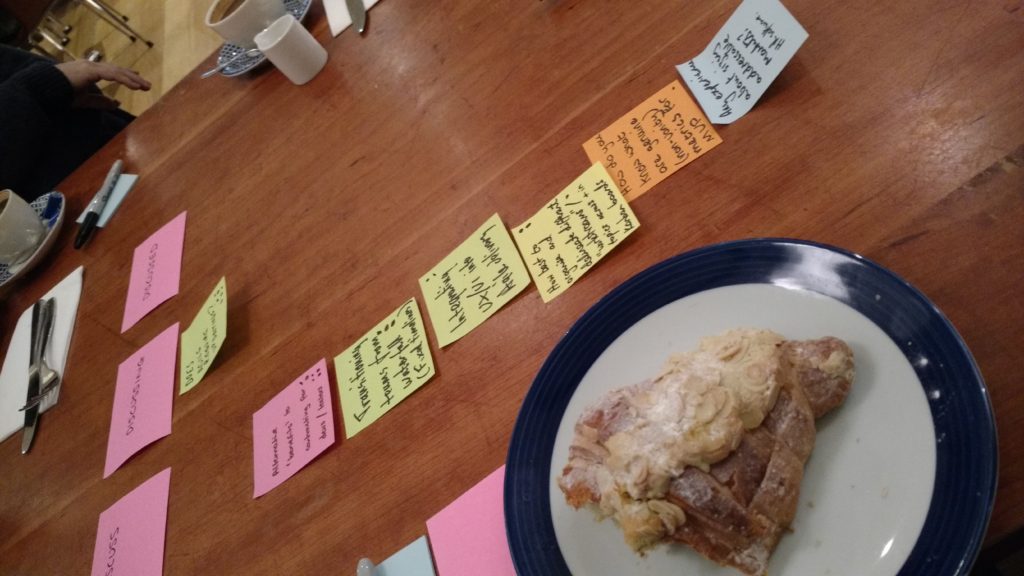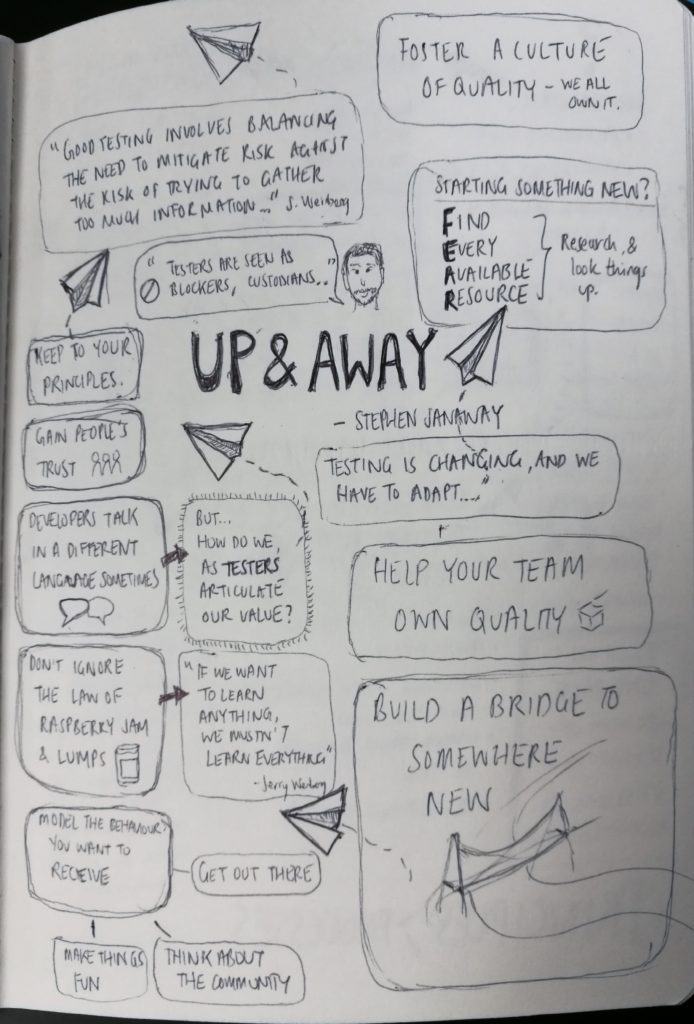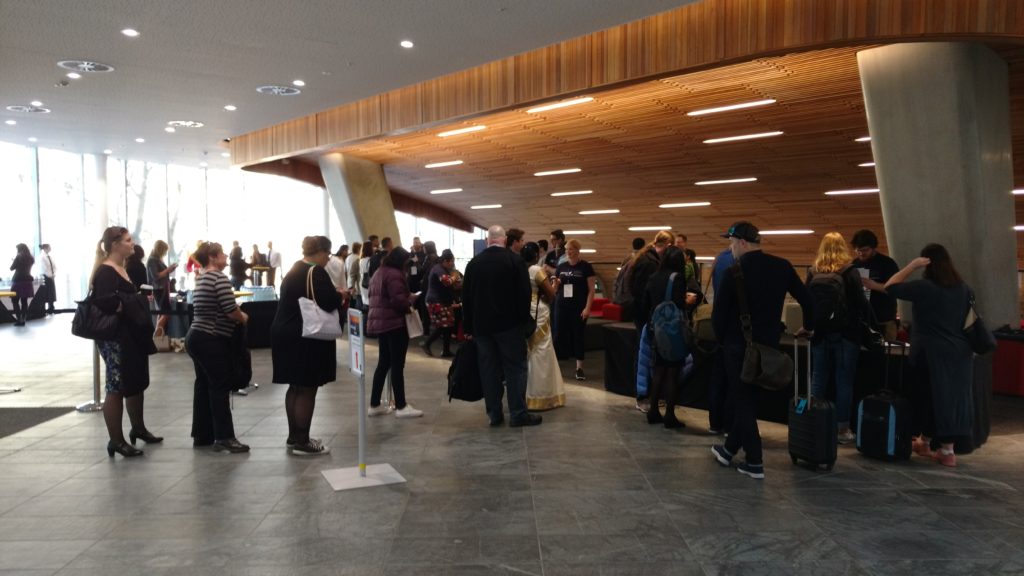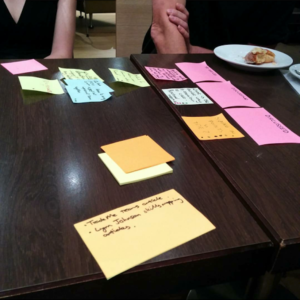Ho, ho. ho, Merry Christmas!
At this time of year it’s a great opportunity to sit down with a team and reflect on the year that has been, and to look forward to the year to come. And being Christmas then it’s also a great opportunity to look a bit silly, dress up in Christmas hats and jumpers and have a bit of fun.
With that in mind, I decided to organise a Christmas retro for the team I’m working in. We are responsible for a brand new product which launched this year, so we’ve had a very busy, very exciting and very experimental year. Getting the team together to reflect on that year was very important.
The Idea For a Christmas Retro
My first step was to look round for inspiration for Christmas themed retros. Had anything like this ever been attempted before? Fortunately I was in luck, both Em Campbell-Pretty and David Manske have both written about a great way to run a retro at Christmas, based upon the Dicken’s book ‘A Christmas Carol’.
Em’s blog article, where she applied the technique to a large group was my first inspiration, and then I stumbled upon David’s article as well, which helped to add some more details, and was helpful for the smaller (15 people) group that I work with.
Basically speaking, the idea is that you base the retro around the ideas of Christmas Past, Present and Yet To Come. In A Christmas Carol, the main character, Scrooge, is visited by ghosts on Christmas Eve who show him how Christmas was, how it is presently for others who rely upon him. and how Christmas will be, were he to continue on his current path. It’s a great book and I’d definitely recommend reading it. Or, watch A Muppet’s Christmas Carol. It’s great 🙂
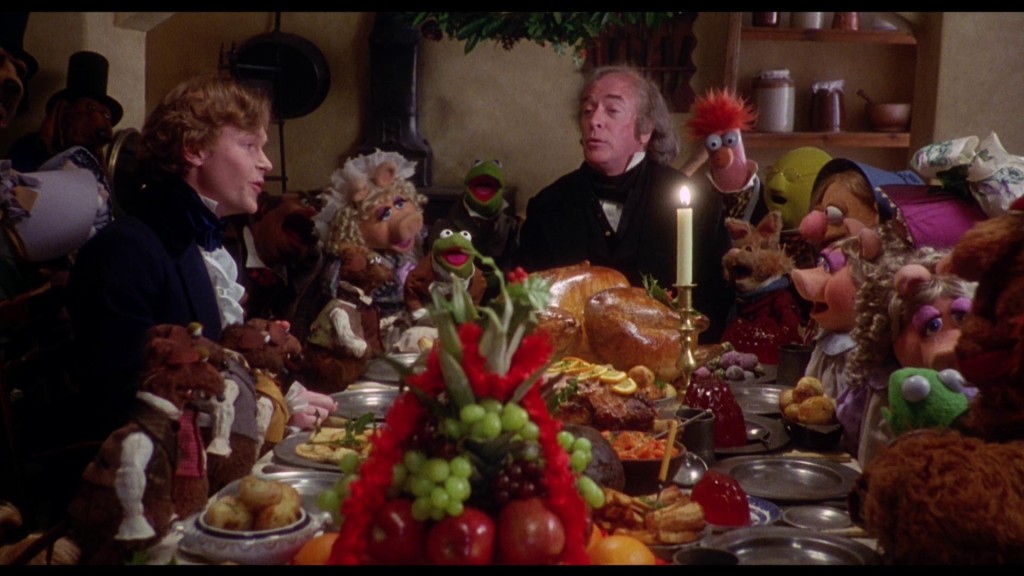
Adapting It For a Retro
Since the Muppets theme seemed to be a fun way of introducing the idea of the Christmas Carol retro format then I went with that. The team love Muppets.
Adapting the story to use in the retro was pretty straight-forward and heavily based on Em and David’s ideas. In order to get the team thinking about everything that had happened throughout the year then myself and our Product Owner prepared a set of posters, one per month of the year and then pinned them up on the wall of the room where the retro was to be held. It was pretty amazing to look back at everything that the team had achieved throughout the year. We focused on delivered work; features, numbers of tickets, etc, and then interspersed this with press cuttings from the year that mentioned our products, team details and fun stuff, such as number of Percy Pigs sweets eaten, etc. Which is important to this team, believe me 🙂

We also bought lots of Christmas hats, food and even a Father Christmas beard for yours truly, then invited the team into the room to start the retro.
Christmas Past
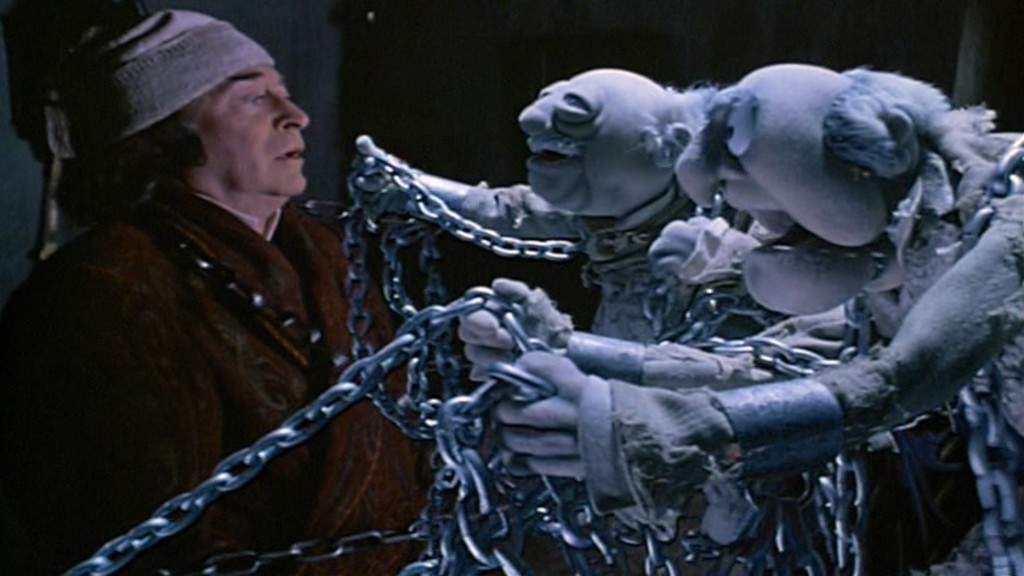
For Christmas past we got the team to look back at the year and then think about whether there was anything that they regretted or wish had gone differently. They wrote these on post-it notes and kept them to themselves.
Christmas Present

Next I explained the idea of Christmas Present, and encouraged the team to think about what had gone well throughout the year, what had made them feel good, and who in the team they would like to thank for helped with particular pieces of work. Again, they wrote these on post-its.
Christmas Yet To Come

The third piece, Christmas Yet To Come, was about the hopes for the next year, What did they want for the team, themselves and our product? The idea was to get them thinking about future priorities and to work on putting together a short list of what we, as a team, think is important for the future.
How It Went
So the stage was set, people were wearing silly hats and eating Christmas food. More importantly they could also see how much we had achieved throughout the year, and they were thinking about how we could work in the future.
The Grinch

Once everyone had written down their thoughts on Christmas Past, Present and Yet To Come I introduced a fourth category, The Grinch. This was an idea that David explains in his blog post and the intention was to get them thinking about what could happen to us, as a team, that could threaten next Christmas. Essentially it was about identifying project and team risk. So everyone also had a think about that and wrote down their ideas.
The Retro
We then went through Christmas Past, Present and Future, and The Grinch in turn.
For Christmas Past everyone was expecting to come and pin up their post-its, rather like a usual retro. But instead, being Christmas, it was time to let go of regrets and so I encouraged everyone to tear up their post-its and throw them away. When I was planning the retro I wasn’t sure how people would react this – would they view this as a waste of their time in writing the regrets down in the first place? It turned out they didn’t – after much hilarity with people throwing post-it’s at each other, the feedback was good, with some people saying that the idea of throwing away regrets rather than sharing them, was the best part of the retro.
For Christmas Present and Future everyone came up in turn and discussed what they had written on their post-it’s. People thanked each other for work that they had helped on. We talked through trends and actions that could be taken from what had been discussed. This gave everyone a great view on where we are as a team and where we want to be going.
For The Grinch we talked through the risks that everyone saw, and how we could deal with these in the next year.
From all of this we were, as a team, able to decide on what was important to us going forward; with actions that were both product focused, and also team focused, such as organising more social events and sharing the responsibility for doing so.
Merry Christmas
We finished by thanking the team for what they had done and explained how they should all be very proud of what they had achieved throughout the year. Then it was time to go off on our team Christmas event offsite.
Overall I think that this retro format works very well. By combining something seasonal, fun and focused, it made looking back on a whole year much easier and more exciting than a more traditional retro format would have done. The format engaged people and made it easier to share experiences.
And let’s be honest, who doesn’t like wearing silly hats and Christmas jumpers once in a while? 🙂








